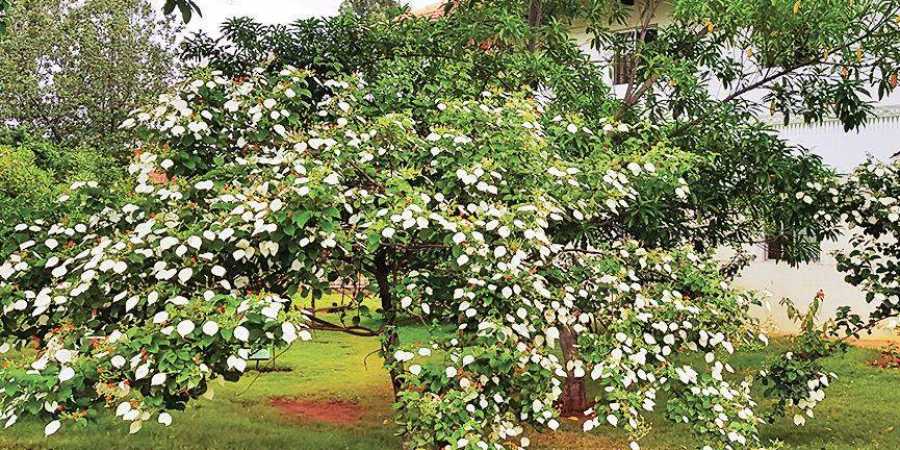In general, plants of ornamental value are grown in gardens just to increase the aesthetic features of landscapes.

Chennai :
In general, plants of ornamental value are grown in gardens just to increase the aesthetic features of landscapes. The ornamental features of the plants may not necessarily be flowers but could also be bright coloured foliage, curiously looking fruits, unusual forms and textures of barks. In all the above cases, the prime intention of the garden planner is to provide eye-pleasing designs to visitors.
In order to enhance the aesthetic values of the gardens/landscapes, our Indian horticulturists import numerous exotic species. However, the flip side to importing exotic species, often, is the sidelining of native, productive landscapes. Apparently, farmers in our country are spending lots money and energy in combating the spread of these invasive ‘imported beauties’. Therefore, it is inevitable for us to learn about the plant species that grow naturally and enhance natural landscapes.
This type of native ornamental plants are known as ‘wild beauties’. This is the right time for nature lovers to turn their attention towards familiarising and propagating our native plants. Interestingly, in addition, our native plants are useful as medicines, food and drinks, and some species are reported to positively alter human attitudes, behaviours and psychological responses.
Mussaenda frondosa L., which belongs to Rubiaceae is one such wild beauty that can be spotted even at a distance because of its shiny, large, leaf-like floral parts. The vernacular names Bellila (Kannada); Vellila (Malayalam); Velli Madandai and popular names in English, Flag Bush, White Lady reveal the beauty of this ornamental shrub. In Sanskrit, this is known as Shruvati.
This wild beauty also has several medicinal uses. Leaves and flowers are crushed and applied externally in case of wounds. The shiny leaf-like bracts is boiled in water, and the liquid is then used to cleanse hair. It is also used to treat jaundice. The juice of the plant is used to treat eye infections. In addition, the common plant’s — found to grow in moist deciduous to evergreen forests of Western Ghats — decoction of leaves are administered orally to get rid of intestinal worms.
source: http://www.newindianexpress.com / The New Indian Express / Home> Lifestyle> Health / by Ganesh Babu NM / Express News Service / November 21st, 2018